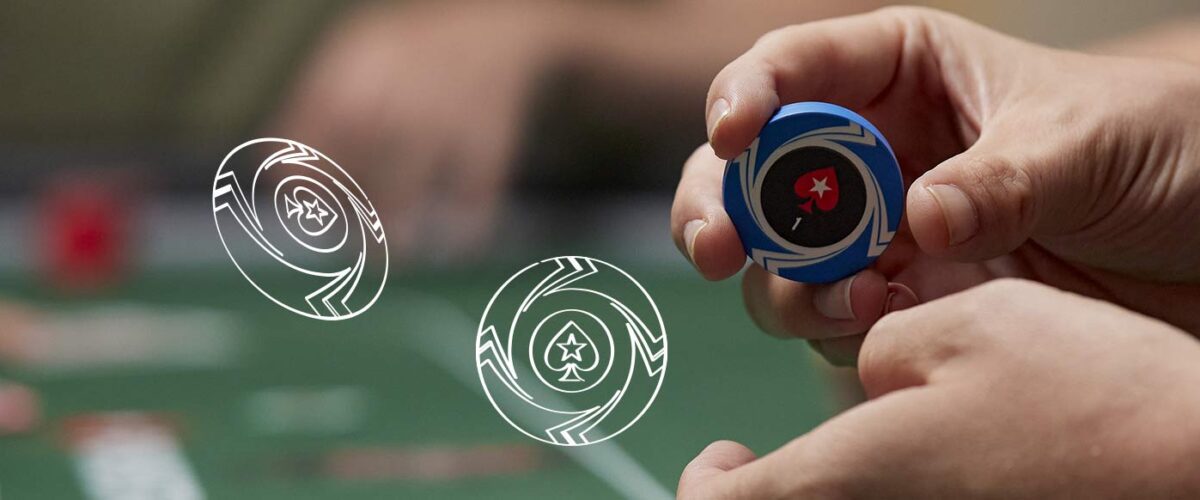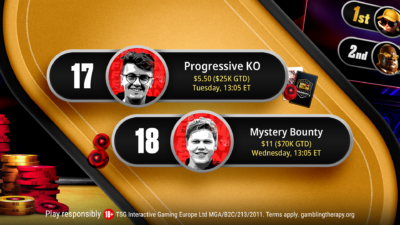This post was originally published on 20 March 2020 and updated on 16 March 2021.
It remains one of the most familiar reasons not to play the Sunday Million. How can you possibly be expected to compete against players more experienced that you?
There’s no point getting into the Sunday Million in a satellite, only to be left wondering what to do when you get there.
It’s hoped if you’ve got this far through the Ultimate Guide you’ll have realised there are simple strategies you can use to over come that.
But there’s always room for some additional help.
Because taking on these more experienced players is going to be crucial. Without taking them on you’re destined to bust early, or even worse – with the money in sight.
So what you need are strategies to overcome that.
You need the insider tips that tell you what you need to know, and when to use it.
Which is exactly what this final chapter of our Sunday Million guide is all about.
So if you want to know how the pros approach an event like the Sunday Million. And if you’re ready to get past those obstacles that have been insurmountable to you in the past, read on.
How to feel more at home in the Sunday Million
This article should leave you with is a sense that you can handle the fluctuating fortunes of an event like the Sunday Million.
Remember, it’s a big event for a reason.
It has thousands of players.
It has more than a million dollars in the prize pool.
In short, it’s the event every poker player wants to play.
You can’t avoid taking on players who technically at least are better than you are, have more experience, and aren’t in the biggest game they’ve ever played.
What you’ll find here are strategies to get past that.
Tips to help you find a home in the Sunday Million, even if it doesn’t go perfectly first time.
But if it doesn’t, their skills and lessons that will make you unrecognisable from the player who started reading this guide back in Chapter 1.
You’ll be a more confident player, and a better one too.
So let’s get started.
Four things that will help you stick around
There are four steps to go through.
In step one we’ll talk about a pre-flop strategy that’s vital to helping you play more hands that you can win.
In step two we’ll talk about what NOT to do to save leaking chips.
And in step three it’s about value betting (as much as possible)
We’ll then show you how paying attention to the stacks behind you can stop costing you big time.
When you do this you’ll not only learn useful strategy that will help you whenever you play. You’ll in crease you chances of still being around when the big pay outs start.
Let’s get to it.
STEP 1: Three bet pre-flop more
The aim here is to get heads up in a hand with whoever opened the betting, keeping others from getting involved.
Especially when you’re in position.
This shifts things in your favour more.
Not only are you in the best position, but you’re putting your opponent on the defensive.
Think about it. How do you feel when you open the betting only for someone in later position to raise?
So avoid being in this position, but pay attention to putting others under pressure.
Let’s look at what else you need to be wary of…
STEP 2: Don’t leak chips with bad continuation bets
You might think that when you lead the betting pre-flop you need to press on after the flop too.
This can lead to trouble.
Instead, cut out the c-bets when you’ve missed the flop and your fold equity is low.
Ace-king always looks great pre-flop. But on a board like Jack-Nine-Seven, and with several other players in the hand, it doesn’t look so good anymore.
So remember, don’t waste your chips just because you took the role of the aggressor early on. Keep your pride in check and save your chips.
You’ll need them for this next part.
STEP 3: Value bet relentlessly
To understand what is mean by this, put yourself in this simple – and familiar — psychological situation.
You’re facing a bet on the river with a reasonable hand. You don’t want to fold because you think you might have won. So you call, only to see yourself beaten.
Now put yourself in the position of the paying making that bet. That’s the position you want to be in.
That’s what this part is all about.
You want to be the player tempting your opponent to call, when you suspect you’re beating them.
So your mission is to do this more.
Here’s an example from PokerStars School of what this might look like.
You open raise in late position with pocket jacks to a little more than two big blinds. The player in the big blind calls.
The flop comes Six-Four-Three rainbow.
After your opponent checks, you continuation bet for 2.5 big blinds (half the pot). They call again.
The turn card pairs the Three and your opponent check/call another half pot value bet of five big blinds. That puts 20 big blinds in the pot.
They check one last time when a Queen lands on the river.
This is a clear value bet and one that players miss again and again.
The opponent has check/called twice already post flop, which means they have something.
Yes, once in a rare while they smashed the board and slow played you all the way… but most of the time they will have a one pair hand or a draw.
Unless they are playing Q4, Q5, or Q6, you still have the best hand. Go ahead and fire!
And here’s why:
Players don’t want to let you bluff them off their A6 or 77 type hands. As a result, you will likely get called by any pair here.
If you bet half pot again, that’s TEN extra big blinds you’re earning on the river that lesser players are not. And all because they are afraid of the queen river or are overly worried they’re being trapped
Those extra 10 big blinds are like an extra tournament life.
There’s’ one more thing you can do too.
STEP 4: Pay attention to player stacks behind you
It’s a simple mistake to make, but not paying attention to the stack sizes of players still to act can cost you big time.
Here’s an example from PokerStars School. It usually comes in the form of someone asking whether they were right to call a shove.
They have opened in late position with J9s for three times the big blind with a 22 big blind stack. The player behind them moves all in for 11 big blinds.
They are now priced into calling, making folding feel unattractive.
But they’ll be putting half their stack and all their stack utility at risk while certainly behind the shover’s range, which makes calling unattractive.
Had they been paying attention to the stacks behind them, they may have chosen to not open this hand at all.
Or they might at least have opened for a min-raise to make folding a bit more palatable should the 11 big blind stack shove over the top.
So the key thing to remember here is that if there are tough stacks behind you, like in this example above, then be cautious. But, if you spot an opening, be sure to take advantage.
Ready to strengthen your game and step up?
It’s natural to size up a poker game in terms of how likely you are to do well. Part of that means assessing the quality of the opposition.
But you can also learn ways to strengthen your game in a way that makes you more resilient in the face of a tough field.
Crucially, it separates you from the type of player making these mistakes because they’re just happy to be playing the Sunday Million.
Instead, you can be more aggressive pre-flop, making others weary of you (rather than the other way around).
You can stop carelessly leaking chips with bad continuation bets.
And you can start value betting relentlessly, making the most of every opportunity.
Back to Top








